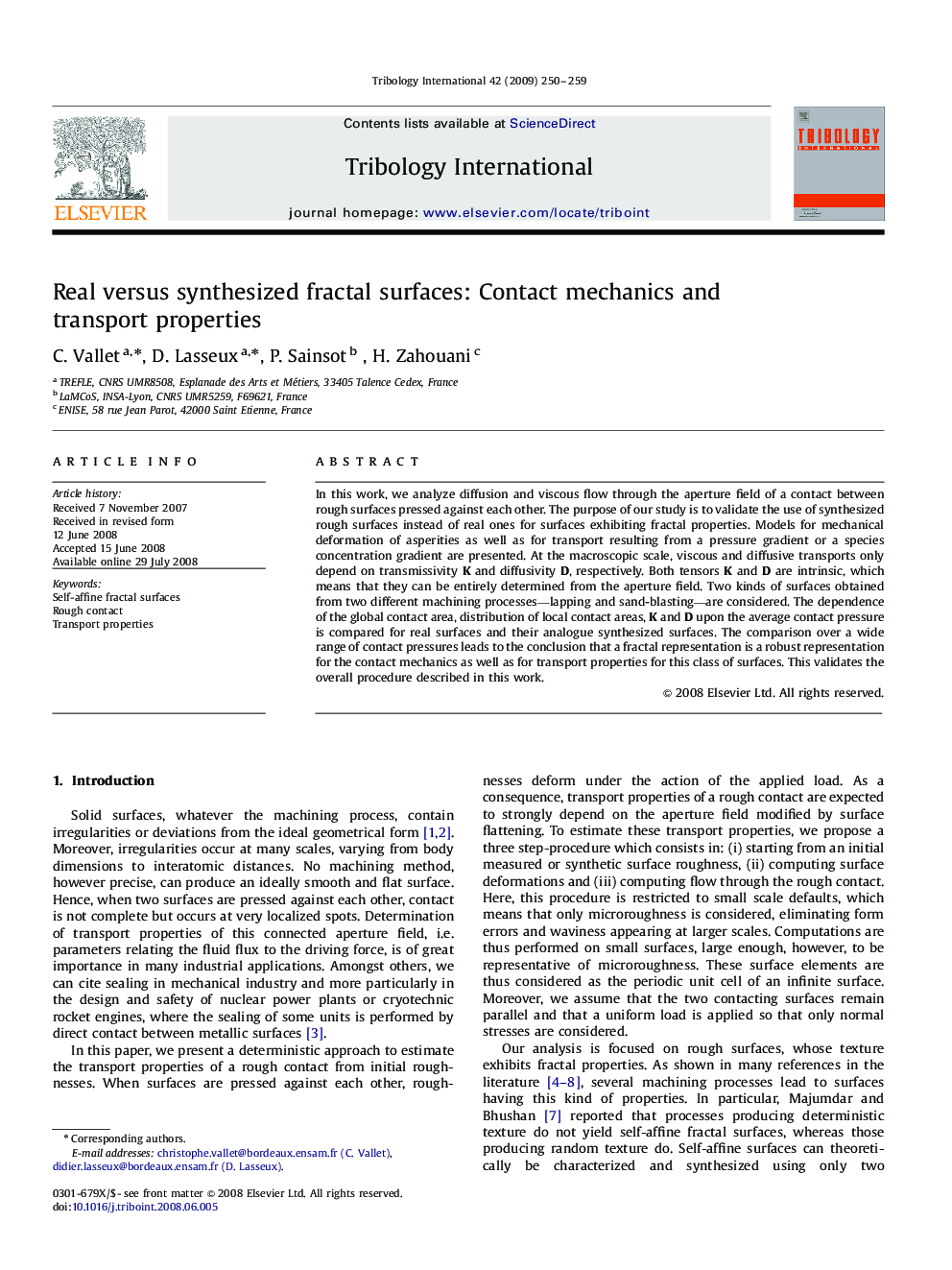| Article ID | Journal | Published Year | Pages | File Type |
|---|---|---|---|---|
| 616247 | Tribology International | 2009 | 10 Pages |
In this work, we analyze diffusion and viscous flow through the aperture field of a contact between rough surfaces pressed against each other. The purpose of our study is to validate the use of synthesized rough surfaces instead of real ones for surfaces exhibiting fractal properties. Models for mechanical deformation of asperities as well as for transport resulting from a pressure gradient or a species concentration gradient are presented. At the macroscopic scale, viscous and diffusive transports only depend on transmissivity KK and diffusivity DD, respectively. Both tensors KK and DD are intrinsic, which means that they can be entirely determined from the aperture field. Two kinds of surfaces obtained from two different machining processes—lapping and sand-blasting—are considered. The dependence of the global contact area, distribution of local contact areas, KK and DD upon the average contact pressure is compared for real surfaces and their analogue synthesized surfaces. The comparison over a wide range of contact pressures leads to the conclusion that a fractal representation is a robust representation for the contact mechanics as well as for transport properties for this class of surfaces. This validates the overall procedure described in this work.
